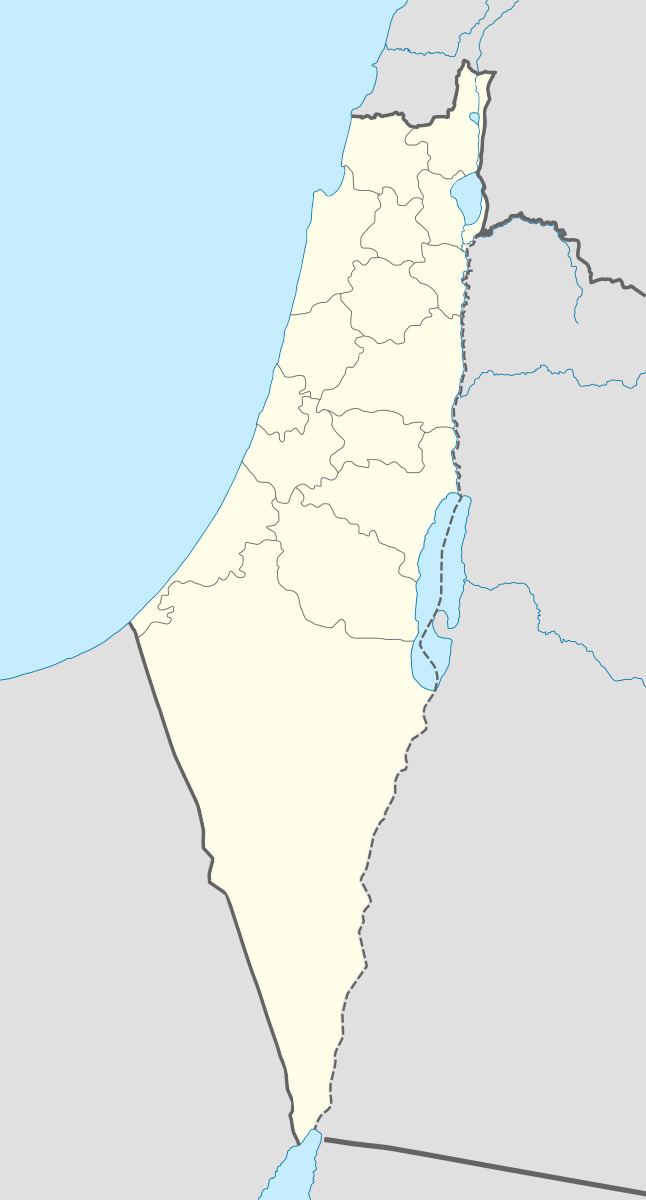Arabic نعليا Palestine grid 109/117 | Population 1310 (1945) | |
 | ||
Name meaning from personal name, meaning either "in the form of a horse-shoe" or from a word meaning "sterile, hard, ground" | ||
Ni'ilya was a Palestinian village in the Gaza Subdistrict. It was depopulated during the 1948 Arab–Israeli War on November 4, 1948, under Operation Yo'av. It was located 19 km northeast of Gaza in the city territory of modern Ashkelon. The village was defended by the Egyptian Army.
Contents
History
Ceramics from the Byzantine era have been found here. The village had tombs of people who were killed while battling the Crusades, according to the villagers.
Ottoman era
Ni'ilya was incorporated into the Ottoman Empire in 1517 with the rest of Palestine, and according to the 1596 daftar, the village formed part of the nahiya (subdistrict) of Gaza under the liwa' (district) of Gaza with a population of 70 households and 10 bachelors, or an estimated 440 people. All were Muslims. The villagers paid a fixed tax-rate of 33.3% on a number of crops, including wheat, barley, summer crops, vineyards, fruit trees, sesame, as well as on goats, beehives; a total of 20,780 Akçe.
Pierre Jacotin noted it as an unnamed village on his map from 1799. In 1863 Victor Guérin found it to be a village with 300 inhabitants. The village had a mosque which contained ancient fragments, such as trunks of marble columns. An Ottoman village list from about 1870 showed that Na'lija had 39 houses and a population of 111, though the population count included men only.
In 1883 the Palestine Exploration Fund's Survey of Western Palestine described Ni'ilya as a village resembling Barbara. They further noted: "A very extensive olive-grove extends thence to Majdal. On the south is a conspicuous white Mukam."
British Mandate era
In the 1922 census of Palestine conducted by the British Mandate authorities, Na'lia had a population of 687 inhabitants, all Muslims, while in the 1931 census, Na'lia had 169 occupied houses and a population of 893 Muslims.
By 1945 this had increased to 1310 Muslims, with a total of 5,233 dunams of land. Cultivated lands in the village in 1944–45 included a total of 1,084 dunums used for citrus and bananas, 2,215 dunums for cereals. An additional 1,436 dunums were irrigated or used for plantations, while 29 dunams were built-up, urban, land.
Ni'ilya students attended school in al-Majdal. A school was built in the village in 1948 shortly before the war but never opened. The village also had a mosque.
1948, aftermath
Ni'ilya was one of the villages named in the orders to the IDF battalions and engineers platoon, that the villagers were to be expelled to Gaza, and the IDF troops were "to prevent their return by destroying their villages." The path leading to the village was to be mined. The IDF troops were ordered to carry out the operation "with determination, accuracy and energy". The operation took place on 30 November. The troops found "about 40" villagers in Barbara and al-Jiyya, "composed of women, old men and children", who offered no resistance. They were expelled to Beit Hanun, in the northern Gaza strip. Eight young men who were found were sent to a POW camp.
Since the war, Ashkelon has expanded onto village land.
